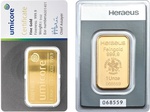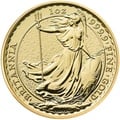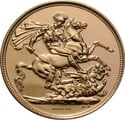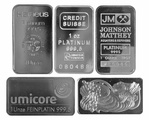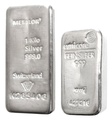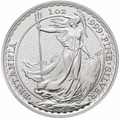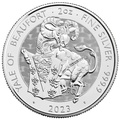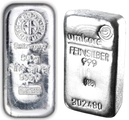The most expensive metal
Many investors ask which is the most expensive metal in the world. Making a list of the most expensive metals is difficult however, and is always subject to change due to the constant fluctuations in each metal's price.
The most expensive metals are generally classed as precious metals and/or noble metals. Precious metals are defined as being rare and of high economic value. Noble metals are those that do not corrode, or have a very high resistance to corrosion. The unique chemical nature of noble metals makes them very useful, and this demand is a large part of what makes them some of the most expensive metals in the world.
The price of the numerous precious metals is determined by three factors; scarcity, applications, and the market demand.
- Scarcity
Though new ore deposits are being discovered, metal scarcity is a very constant factor. As time goes by, the amount of metal that can be mined will inevitably decrease due to the finite nature of resources available on the planet. Without recycling this can lead to shortages.
- Applications
Applications and uses of metals changes regularly, as new technologies create new uses for metals or render old uses irrelevant. These applications feed into demand; the more uses for each metal and the more metal needed for each unit, the higher the demand will be.
- Market Demand
Market demand is the major driver of prices, and ties into the two factors previously mentioned. Political uncertainty, short-term supply and demand problems, and newly-discovered technological advances can all drive demand higher, increasing prices.
Top ten most expensive metals
At the time of writing these are the ten most expensive metals:
| Metal | Price per £/ozt | Date of discovery |
| Californium | £837,000,000 | 1950 |
| Rhodium | £10,027.26 | 1803 |
| Iridium | £3956.75 | 1803 |
| Gold | £1,564.14 | Ancient |
| Palladium | £1,365.46 | 1803 |
| Platinum | £835.76 | 1557 |
| Ruthenium | £391.57 | 1844 |
| Osmium | £294 | 1803 |
| Rhenium | £38.35 | 1908 |
| Silver | £19.13 | Ancient |
What is the most expensive metal in the world?
Californium
The most expensive metal in the world is Californium. Despite being the most expensive metal, it is actually of
little interest or consequence to most people. It has a few select uses in the medical industry, but is in fact
highly radio-active and extremely dangerous! This limits its main use to nuclear power generation.
Californium is a man-made metal, and its huge price is entirely due to its rarity and production cost. Annually
only 30 – 40 micrograms are made, in laboratories only in Russia and the United States.
Rhodium
Of far more practical application than californium and second to it, rhodium is the second-most expensive metal.
Many people may think of gold or palladium as being more expensive than rhodium, but its greater scarcity and
wide ranging applications make it consistently the second-most expensive metal.
Though extremely rare, gold is four times more plentiful, and platinum five times more plentiful than rhodium. It is
this scarcity which puts it in second in the table. Rhodium also has many uses; it is commonly used as plating in
jewellery, especially on
white gold.
Its industrial applications are also numerous; because of its high reflective
properties, it is most used in lighting and automotive production.
Iridium
Iridium is one of the rarest naturally occurring elements, which accounts for its high price. It is also extremely
hard, brittle, and the most corrosion and heat resistant of all metals. The high melting point of iridium explains
its major application in spark plugs manufacture, in addition to which new applications are being found in electronics.
This will likely further add to its demand and probable expense in the future.
Palladium
Palladium
was the most expensive of the four major precious metals - gold, silver, platinum and palladium.
It is scarcer than platinum, and is being used in great quantities for catalytic converters in cars. Because of this,
prices have swung between the two metals.
The automotive industry has used whichever metal has been cheapest. Demand from the car industry, balanced by
the greater scarcity of palladium, has determined the price differences between the two metals for the past 20 years.
Rhenium
With the third-highest metal melting point, the largest application for Rhenium is in high temperature
jet engine parts. In conjunction with platinum, it is also extensively used as a catalyst in fuel production.
Rarity, a complex extraction processes, and demand from the aircraft industry, combine to determine
its cost.
Gold
Today there are a huge range of
uses for gold.
Tradition and its unique yellow colour makes it the continuing
first choice for jewellery.
Gold’s high electrical conductivity means it has numerous electronic applications. Its high resistance to corrosion
makes it ideal for medical and dental implants. In addition to all this, its chemical composition has applications
in many medicines.
Most importantly however, gold's history and use in currencies makes it unparalleled as a financial investment.
Throughout history there has always been a market for gold. Though not the rarest metal, its scarcity has
guaranteed its value. In the current times of fast moving global markets, and floating fiat currencies, gold
is seen as a safe haven investment. Some economists argue that it has maintained its value without
depreciation since ancient Roman times.
Because the price of gold is uncorrelated to investments such as stocks and shares it is also favoured as
hedge investment. For the same reasons it can be used to bring diversity to a financial portfolio.
The price of most metals depends on scarcity plus practical applications. Gold has passed this, and is more
readily driven by market conditions, its demand boosted by its use as a hedge investment. This is explained
by its unique role throughout human history as a sign of wealth, and for physical money.
Platinum
Platinum has been used since ancient times, but was often thought to be silver, or was used mixed in with
gold. It was not until 1557 that it was recognised in Europe as a distinctive metal in its own right.
Early in the 19th century a similar process identified ruthenium, rhodium, palladium, osmium and iridium
as individual metals distinct from platinum. They all share similar chemical properties and are classified as
being part of the greater
platinum group of metals.
Platinum is scarcer than gold and shares similar applications, but is less used than gold at the moment.
Events in the car industry have a great effect on platinum prices, as mentioned in the palladium section
above.
Despite having a far smaller investment market than gold, the number of investors interested in platinum
appears to be growing. Consequently, mints and refiners are responding by increasing their ranges of platinum
bars and coins.
Osmium
Osmium is the densest naturally occurring element. This makes it particularly beneficial in applications where
extreme durability and hardness are required. It was used in the manufacture of record player stylus needles,
but today it has applications in fountain pen nibs, and electrical contacts that are subject to wearing. Osmium
was also used in early lightbulbs, but was soon replaced by tungsten.
Silver
Gold and silver have very similar histories and usages. Both have played large parts in human society over the years.
Both have been, and still are, used in manufacturing and jewellery, and silver – as the best electrical and thermal
conductor – is seeing a lot of growth for
industrial use
in recent years.
The big difference between gold and silver is caused by their comparative scarcity. Compared to gold, silver is
relatively plentiful, and this is reflected in its expense. Nevertheless, like gold, silver can be a safe haven investment
and can add diversity to an investment portfolio.
- How To Buy Gold
- How to Buy?
- Payment Options
- Delivery Options
- Gold Storage
- Storage at Brink's
- Gold Investment Guide
- Why buy gold?
- Is gold a good investment?
- Why physical gold?
- Best time to buy gold?
- Gold bars vs coins?
- Gold vs Silver
- Gold - Silver Ratio explained
- VAT on bullion
- CGT on bullion
- Legal tender coins
- Top 5 Gold Investments
- Top 5 Silver Investments
- Gold vs ISAs
- Gold vs Buy-to-Let
- Gold vs FTSE 100
- Gold vs Bitcoin
- Where to buy gold?
- Why buy from us?
- Where to sell gold?
- Coin Shops
- Gold Price Forecasts
- Top 10 Gold Producers
- Top 10 Gold Reserves
- Gold Britannia vs Sovereign
- Britannia coin designs
- Sovereign coin designs
- Sovereign Mintages
- Sovereign mint marks
- British coin specs
- What is a proof coin?
- Royal Mint bullion
- The Queen's Beasts
- Royal Mint Lunar Coins
- Bullion Refiners
- British coin mints
- Krugerrands
- Gold Tola - India & Pakistan
- Bullion Index


